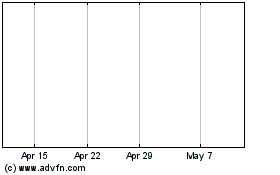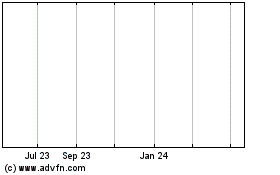TIDMAZN
RNS Number : 5427L
AstraZeneca PLC
06 September 2023
6 September 2023
Update on US regulatory review of Ultomiris in NMOSD
The US Food and Drug Administration (FDA) has issued a complete
response letter (CRL) regarding the supplemental Biologics License
Application (sBLA) for long-acting C5 complement inhibitor
Ultomiris (ravulizumab-cwvz) for the treatment of adult patients
with neuromyelitis optica spectrum disorder (NMOSD) who are
anti-aquaporin-4 (AQP4) antibody positive (Ab+).
The CRL did not request additional analysis or reanalysis of the
Phase III CHAMPION-NMOSD trial data included in the sBLA submission
and did not raise concerns about the efficacy or safety data from
the trial.(1)
The FDA requested modifications to enhance the Ultomiris Risk
Evaluation and Mitigation Strategy (REMS) to further validate
patients' meningococcal vaccination status or prophylactic
administration of antibiotics prior to treatment .
Alexion, AstraZeneca Rare Disease is working closely with the
FDA regarding next steps for the REMS modifications and remains
committed to bringing Ultomiris to people living with NMOSD in the
US as quickly as possible.
Ultomiris is currently approved for the treatment of certain
adults with NMOSD in the European Union (EU), Japan and other
countries.
Ultomiris is approved by the FDA for the treatment of adult
patients with generalised myasthenia gravis (gMG) who are
anti-acetylcholine receptor (AChR) Ab+, and certain adults and
children with paroxysmal nocturnal haemoglobinuria (PNH) or
atypical haemolytic uraemic syndrome (aHUS).
Notes
NMOSD
NMOSD is a rare disease in which the immune system is
inappropriately activated to target healthy tissues and cells in
the central nervous system (CNS).(2,3) Approximately three-quarters
of people with NMOSD are anti-AQP4 Ab+, meaning they produce
antibodies that bind to a specific protein, aquaporin-4 (AQP4).(4)
This binding can inappropriately activate the complement system,
which is part of the immune system and is essential to the body's
defence against infection, to destroy cells in the optic nerve,
spinal cord and brain.(2,5,6)
It most commonly affects women and begins in the mid-30s. Men
and children may also develop NMOSD, but it is even more rare.(7,8)
People with NMOSD may experience vision problems, intense pain,
loss of bladder/bowel function, abnormal skin sensations (e.g.,
tingling, prickling or sensitivity to heat/cold) and impact on
coordination and/or movement.(9-13) Most people living with NMOSD
experience unpredictable relapses, also known as attacks. Each
relapse can result in cumulative disability including vision loss,
paralysis and sometimes premature death.(10,11,14) NMOSD is a
distinct disease from other CNS diseases, including multiple
sclerosis. The journey to diagnosis can be long, with the disease
sometimes misdiagnosed.(15-17)
CHAMPION-NMOSD
CHAMPION-NMOSD is a global Phase III, open-label, multicentre
trial evaluating the safety and efficacy of Ultomiris in adults
with NMOSD. The trial enrolled 58 patients across North America,
Europe, Asia-Pacific and Japan. Participants were required to have
a confirmed NMOSD diagnosis with a positive anti-AQP4 antibody
test, at least one attack or relapse in the twelve months prior to
the screening visit, an Expanded Disability Status Scale Score of 7
or less and body weight of at least 40 kilograms at trial entry.
Participants could stay on stable supportive immunosuppressive
therapy for the duration of the trial. (18)
Due to the potential long-term functional impact of NMOSD
relapses and available effective treatment options, a direct
placebo comparator arm was precluded for ethical reasons. The
active treatment was compared to an external placebo arm from the
pivotal Soliris PREVENT clinical trial.
Over a median treatment duration of 73 weeks, all enrolled
patients received a single weight-based loading dose of Ultomiris
on Day 1, followed by regular weight-based maintenance dosing
beginning on Day 15, every eight weeks. The primary endpoint was
time to first on-trial relapse, as confirmed by an independent
adjudication committee. The end of the primary treatment period
could have occurred either when all patients completed or
discontinued prior to the Week 26 visit and two or more adjudicated
relapses were observed, or when all patients completed or
discontinued prior to the Week 50 visit if fewer than two
adjudicated relapses were observed. In the trial, there were zero
adjudicated relapses, so the end of the primary treatment period
occurred when the last enrolled participant completed the 50-week
visit.
Patients who completed the primary treatment period were
eligible to continue into a long-term extension period, which is
ongoing.
Ultomiris
Ultomiris (ravulizumab-cwvz), the first and only long-acting C5
complement inhibitor, provides immediate, complete and sustained
complement inhibition. The medication works by inhibiting the C5
protein in the terminal complement cascade, a part of the body's
immune system. When activated in an uncontrolled manner, the
complement cascade over-responds, leading the body to attack its
own healthy cells. Ultomiris is administered intravenously every
eight weeks in adult patients, following a loading dose.
Ultomiris is approved in the US, EU and Japan for the treatment
of certain adults with generalised myasthenia gravis.
Ultomiris is also approved in the US, EU and Japan for the
treatment of certain adults with paroxysmal nocturnal
haemoglobinuria (PNH) and for certain children with PNH in the US
and EU.
Additionally, Ultomiris is approved in the US, EU and Japan for
certain adults and children with atypical haemolytic uraemic
syndrome to inhibit complement-mediated thrombotic
microangiopathy.
Further, Ultomiris is approved in the EU and Japan for the
treatment of certain adults with neuromyelitis optica spectrum
disorder (NMOSD).
As part of a broad development programme, Ultomiris is being
assessed for the treatment of additional haematology and neurology
indications.
Alexion
Alexion, AstraZeneca Rare Disease, is the group within
AstraZeneca focused on rare diseases, created following the 2021
acquisition of Alexion Pharmaceuticals, Inc. As a leader in rare
diseases for more than 30 years, Alexion is focused on serving
patients and families affected by rare diseases and devastating
conditions through the discovery, development and commercialisation
of life-changing medicines. Alexion focuses its research efforts on
novel molecules and targets in the complement cascade and its
development efforts on haematology, nephrology, neurology,
metabolic disorders, cardiology and ophthalmology. Headquartered in
Boston, Massachusetts, Alexion has offices around the globe and
serves patients in more than 50 countries.
AstraZeneca
AstraZeneca (LSE/STO/Nasdaq: AZN) is a global, science-led
biopharmaceutical company that focuses on the discovery,
development, and commercialisation of prescription medicines in
Oncology, Rare Diseases, and BioPharmaceuticals, including
Cardiovascular, Renal & Metabolism, and Respiratory &
Immunology. Based in Cambridge, UK, AstraZeneca operates in over
100 countries and its innovative medicines are used by millions of
patients worldwide. Please visit astrazeneca.com and follow the
Company on social media @AstraZeneca .
Contacts
For details on how to contact the Investor Relations Team,
please click here . For Media contacts, click here .
References
1. Pittock SJ, et al. Efficacy and safety of ravulizumab in
adults with anti-aquaporin-4 antibody-positive neuromyelitis optica
spectrum disorder: outcomes from the phase 3 CHAMPION-NMOSD trial.
Oral Presentation at: American Academy of Neurology Annual Meeting,
April 23, 2023; Presentation S5.002 .
2. Wingerchuk DM, et al. The spectrum of neuromyelitis optica. Lancet Neurol. 2007;6(9):805-815.
3. Wingerchuk DM. Diagnosis and treatment of neuromyelitis optica. Neurologist. 2007;13(1):2-11.
4. Wingerchuk DM, et al. The clinical course of neuromyelitis
optica (Devic's syndrome). Neurology. 1999;53(5):1107-1114.
5. Cossburn M, et al. The Prevalence of Neuromyelitis Optica in
South East Wales. Eur J Neurol. 2012;19(4): 655-659.
6. Papadopoulos MC, et al. Treatment of neuromyelitis optica:
state-of-the-art and emerging therapies. Nat Rev Neurol.
2014;10(9):493.
7. Takata K, et al. Aquaporins: water channel proteins of the
cell membrane. Prog Histochem Cytochem. 2004;39(1):1-83.
8. Mori M, et al. Worldwide prevalence of neuromyelitis optica
spectrum disorders. J Neurol Neurosurg Psychiatry.
2018;89(6):555-556.
9. Hamid SHM, et al. What proportion of AQP4-IgG-negative NMO
spectrum disorder patients are MOG-IgG positive? A cross sectional
study of 132 patients. J Neurol. 2017;264(10):2088-2094.
10. Wingerchuk DM, Weinshenker BG. Neuromyelitis optica. Curr
Treat Options Neurol. 2008;10(1):55-66.
11. Kitley J, et al. Prognostic factors and disease course in
aquaporin-4 antibody-positive patients with neuromyelitis optica
spectrum disorder from the United Kingdom and Japan. Brain .
2012;135(6):1834-1849.
12. Quek AML, et al. Effects of age and sex on aquaporin-4
autoimmunity. Arch Neurol 2012;69:1039-43.
13. Tüzün E, et al. Enhanced complement consumption in
neuromyelitis optica and Behcet's disease patients. J Neuroimmunol.
2011;233(1-2):211-215.
14. Jarius S, et al. Contrasting disease patterns in
seropositive and seronegative neuromyelitis optica: a multicentre
study of 175 patients. J Neuroinflammation. 2012;9:14.
15. Jarius S, Wildemann B. The History of Neuromyelitis Optica.
J Neuroinflammation. 2013;10, 797.
16. Kuroda H, et al. Increase of complement fragment C5a in
cerebrospinal fluid during exacerbation of neuromyelitis optica. J
Neuroimmunol. 2013;254(1-2):178-182.
17. Mealy MA, et al. Assessment of Patients with Neuromyelitis
Optica Spectrum Disorder Using the EQ-5D. Int J MS Care.
2019;21(3), 129-134.
18. ClinicalTrials.gov. An Efficacy and Safety Study of
Ravulizumab in Adult Participants With NMOSD. NCT Identifier:
NCT04201262. Available here . Accessed August 2023.
Adrian Kemp
Company Secretary
AstraZeneca PLC
This information is provided by RNS, the news service of the
London Stock Exchange. RNS is approved by the Financial Conduct
Authority to act as a Primary Information Provider in the United
Kingdom. Terms and conditions relating to the use and distribution
of this information may apply. For further information, please
contact rns@lseg.com or visit www.rns.com.
RNS may use your IP address to confirm compliance with the terms
and conditions, to analyse how you engage with the information
contained in this communication, and to share such analysis on an
anonymised basis with others as part of our commercial services.
For further information about how RNS and the London Stock Exchange
use the personal data you provide us, please see our Privacy
Policy.
END
MSCFZGGLKVMGFZG
(END) Dow Jones Newswires
September 06, 2023 02:00 ET (06:00 GMT)
Astrazeneca (LSE:0A4J)
Historical Stock Chart
From Nov 2024 to Dec 2024

Astrazeneca (LSE:0A4J)
Historical Stock Chart
From Dec 2023 to Dec 2024




